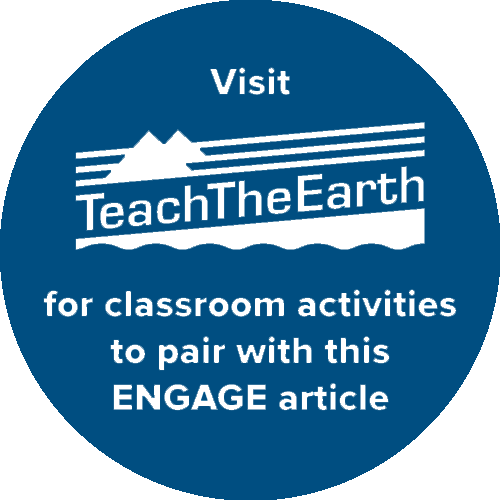With mathematical models and estimates, coding know-how, and a small computer, three high school students from Portugal succeeded in an experiment to measure Earth’s magnetic field and pinpoint its pole locations using data from space.
Using Python, the students wrote code for a small Raspberry Pi computer, an Astro Pi, to gather data from our planet’s magnetic field during two orbits of the International Space Station (ISS) on 21 April 2021. The experiment’s results were published in the American Journal of Physics. The team was 1 of 10 winners of the 2020–2021 Astro Pi Challenge Mission Space Lab, a science contest for students under age 19 run by the European Space Agency (ESA) in collaboration with the Raspberry Pi Foundation.
An Educational Adventure
“During high school, I always wanted to take part in an activity that went beyond the ones we had.…The ESA challenges have always appealed to my colleagues and [me], as they focus on computing and programming, areas in which we had little experience and wanted to learn more about,” said Lourenço Faria, one of the paper’s coauthors and now an undergraduate student in aerospace engineering at the University of Lisbon.
Faria and his colleagues Bernardo Alves and Miguel Cymbron—they named their team Mag-AZ—came up with the idea to take part in the Astro Pi Challenge while they were students at Rebelo Secondary School in Ponta Delgada, the largest city in the Portuguese archipelago of the Azores. Their physics teacher, Maria Beatriz Cachim, connected them to their mentor, Nuno Barros e Sá, a professor of science and technology at the University of the Azores.
“We worked with the idea that with some measurements of the Earth’s magnetic field along the path of the ISS, it would be possible to create a model of the [magnetic] field for the planet in its entirety,” said Sá.
As the mathematics required was more advanced than what the students had studied at school, Sá worked on the model calculations while the three students worked on the code, which included readings of Earth’s magnetic field at regular intervals of about 2 seconds. “Each ISS orbit takes one and a half hours, so during a 3-hour observation, the computer got over 4,800 data points for analysis,” said Sá.
On the basis of Sá’s model, the team created a Python script to get magnetic field readings from the ISS. Astro Pi Mission Control thoroughly tested the script on an Astro Pi on Earth before uplinking it to the ISS, where the Astro Pi there ran the code, gathered the data, and sent them back to Earth.
“With projects like these and in real life, we’ve got to think of several areas at once and put that knowledge to work. That was very challenging.”
The team compared their results with data from the International Geomagnetic Reference Field (IGRF), a standard mathematical description of Earth’s magnetic field. With a set of 15 orbits’ worth of ISS data from another Raspberry Pi Foundation mission, the team repeated the analysis and found results very compatible with those from the IGRF.
“The results were quite surprising,” said Sá. Given that the team was using a relatively simple and low-cost set of instrumentation, “the measurements were much more accurate than we expected,” he explained.
This sort of modeling is nothing new in science, Sá added, but the activity had great educational value, as it pushed students to try their hands at a very practical scientific problem.
“When we’re at school, we’re taught a specific area and get evaluated in that area alone. With projects like these and in real life, we’ve got to think of several areas at once and put that knowledge to work. That was very challenging,” said Faria.
“The Mag-AZ team was one of the nine teams from Portugal that achieved flight status for Mission Space Lab 2020/2021 and had their code run on the ISS. The judges were impressed by the strength of [the] scientific process applied to analyzing their data, the quality of their report, and their thoughtful reflections on the limitations of their experiment,” said Sam Duffy, Astro Pi program manager at the Raspberry Pi Foundation.
—Meghie Rodrigues (@meghier), Science Writer
This news article is included in our ENGAGE resource for educators seeking science news for their classroom lessons. Browse all ENGAGE articles, and share with your fellow educators how you integrated the article into an activity in the comments section below.


